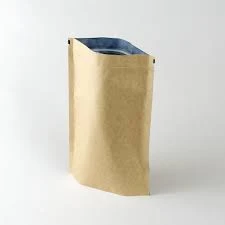- Afrikaans
- Albanian
- Amharic
- Arabic
- Armenian
- Azerbaijani
- Basque
- Belarusian
- Bengali
- Bosnian
- Bulgarian
- Catalan
- Cebuano
- chinese_simplified
- chinese_traditional
- Corsican
- Croatian
- Czech
- Danish
- Dutch
- English
- Esperanto
- Estonian
- Finnish
- French
- Frisian
- Galician
- Georgian
- German
- Greek
- Gujarati
- haitian_creole
- hausa
- hawaiian
- Hebrew
- Hindi
- Miao
- Hungarian
- Icelandic
- igbo
- Indonesian
- irish
- Italian
- Japanese
- Javanese
- Kannada
- kazakh
- Khmer
- Rwandese
- Korean
- Kurdish
- Kyrgyz
- Lao
- Latin
- Latvian
- Lithuanian
- Luxembourgish
- Macedonian
- Malgashi
- Malay
- Malayalam
- Maltese
- Maori
- Marathi
- Mongolian
- Myanmar
- Nepali
- Norwegian
- Norwegian
- Occitan
- Pashto
- Persian
- Polish
- Portuguese
- Punjabi
- Romanian
- Russian
- Samoan
- scottish-gaelic
- Serbian
- Sesotho
- Shona
- Sindhi
- Sinhala
- Slovak
- Slovenian
- Somali
- Spanish
- Sundanese
- Swahili
- Swedish
- Tagalog
- Tajik
- Tamil
- Tatar
- Telugu
- Thai
- Turkish
- Turkmen
- Ukrainian
- Urdu
- Uighur
- Uzbek
- Vietnamese
- Welsh
- Bantu
- Yiddish
- Yoruba
- Zulu
Innovations in Sustainable Paper and Packaging Solutions for a Greener Future
The Importance of Paper and Packaging in Modern Society
In our fast-paced world, where convenience often takes precedence over sustainability, the roles of paper and packaging have come under intense scrutiny. However, these two components play a critical role not only in our everyday lives but also in the broader context of environmental considerations, economic factors, and innovative solutions for a sustainable future.
The Ubiquity of Paper and Packaging
Paper and packaging materials are omnipresent in our lives. From the moment we wake up—perhaps using paper towels in the kitchen or reading the news on printed articles to the numerous packaging materials we encounter throughout the day while consuming food or purchasing products—these everyday items have an undeniable impact on our lifestyle. Packaging plays an essential role in protecting products, extending shelf life, and providing tangibility to digital transactions through mailing and shipping. According to the paper and packaging industry, these materials ensure that goods reach consumers safely and efficiently, reducing waste and improving the overall experience.
Economic Contributions
The paper and packaging industry is a significant contributor to the global economy. It supports millions of jobs worldwide, from forest management to manufacturing, distribution, and recycling. The industry is also increasingly adapting to meet the demands of a continuously evolving marketplace. For instance, the onset of e-commerce has led to a surge in demand for packaging solutions tailored specifically for shipping and logistics. This transition has stimulated innovation, prompting advancements in materials that not only serve functional purposes but are also eco-friendly.
Environmental Considerations
paper and packaging

However, the environmental impact of paper and packaging cannot be ignored. The production of paper involves considerable energy use and resource consumption, while improper disposal of packaging contributes to landfill waste and pollution. Organizations and manufacturers are becoming more aware of these challenges and are actively seeking to minimize their carbon footprint. Sustainable practices are becoming the norm, with a push towards using recycled materials, optimizing production processes, and developing biodegradable or compostable packaging options.
One successful example of this shift is seen in the increasing use of recycled paper. It requires less energy and fewer raw materials compared to new paper production. In addition, many companies now prioritize sustainable sourcing for their packaging materials, ensuring that they come from responsibly managed forests. This eco-conscious approach not only benefits the environment but also appeals to a growing base of environmentally aware consumers who prioritize sustainability in their purchasing decisions.
Innovations and Future Directions
Looking ahead, the future of paper and packaging is poised for further innovation. Advances in technology are paving the way for smart packaging solutions, including systems that can monitor freshness levels or provide real-time tracking. These innovations can improve supply chain efficiency and enhance the consumer experience. Moreover, the integration of digital technologies with traditional packaging could lead to more personalized and interactive consumer encounters.
Additionally, the challenge of balancing sustainability with consumer convenience is being addressed by adopting a circular economy approach. This model focuses on designing products and packaging with their end-of-life in mind, promoting reuse, and ensuring materials are returned to the manufacturing cycle. This shift not only reduces waste but also helps to create a more resilient economy.
Conclusion
In conclusion, while paper and packaging play integral roles in our daily lives, their significance extends far beyond mere convenience. The ongoing transformation of industry practices, aligned with growing environmental awareness, showcases a commitment to sustainability and innovation. As we navigate the complexities of modern consumerism, the paper and packaging sectors can lead the way in creating solutions that respect our planet while continuing to meet the needs of society. By embracing these challenges, we can work towards a more sustainable and responsible future, ensuring that the essential functions of paper and packaging coexist harmoniously with ecological considerations.













